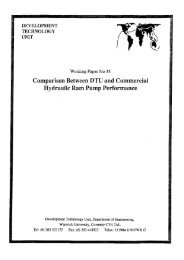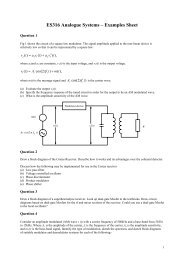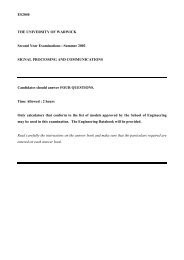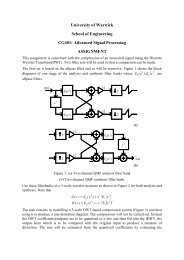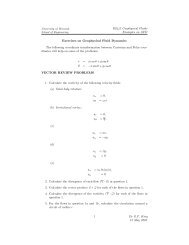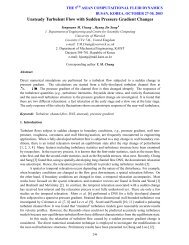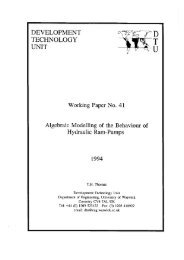Abstracts - KTH Mechanics
Abstracts - KTH Mechanics
Abstracts - KTH Mechanics
Create successful ePaper yourself
Turn your PDF publications into a flip-book with our unique Google optimized e-Paper software.
vii<br />
Fluid mechanics of phase change<br />
Gustav Amberg a<br />
One crucial step in almost all materials processes is solidification in one form or<br />
other. The conditions under which the melt resolidifies will be crucial for the final<br />
microstructure of the material. The size and morphology of the individual grains<br />
that make up a polycrystalline material, the homogeneity of a monocrystal, the<br />
actual phase that is formed, as well as its local composition, is determined by the<br />
interplay between local heat and mass transfer and the thermodynamics of the<br />
phase change. Even though the microstructure of the material may change<br />
considerably during subsequent cooling and following process steps, the<br />
foundation has been laid at the point of solidification. Since local heat and mass<br />
transfer governs the phase change, it is obvious that any convection in the melt will<br />
be paramount in determining the structure of the material, thus making this an area<br />
of important applications that should interest fluid dynamicists. Aside from the<br />
technological processes referred to above, there are also numerous phenomena in<br />
nature where the interplay of convection and phase change is crucial, from the<br />
formation of ice on sea and lakes, to solidification of magma into rock.<br />
In this lecture I will outline some basic solidification phenomena, following a<br />
path of increasing geometrical complexity, and discuss different effects of<br />
convection and fluid flow as I go along. In the simplest situation, a solid growing<br />
very slowly may form a planar interface, but as the driving force for phase change<br />
increases, this becomes unstable to shape perturbations, which may develop into<br />
highly complex patterns. One common morphology is a dendritic crystal, which<br />
grows in a tree-like shape. Eventually a complex solid-liquid two-phase system is<br />
formed. In all of these processes the presence of convection and melt motion will<br />
have a crucial effect on the structures that are formed. As an example, in forced<br />
convection past a growing array of dendrites, the dendritic forest will tend to tilt<br />
upstream into the wind. Around a single, large, slowly growing crystal, natural<br />
convection may be important, causing an enhanced growth downwards, in the<br />
direction of gravity. Many relevant materials processes involve free liquid melt<br />
surfaces, and in such cases additional important driving forces for fluid motion are<br />
capillarity and wetting, and surface tension gradients due to temperature or<br />
concentration gradients.<br />
In discussing these problems I will also have to briefly introduce the phase field<br />
method, a diffuse interface method where model equations for phase change are<br />
derived using the principles of phenomenological non-equilibrium<br />
thermodynamics.<br />
a <strong>KTH</strong> <strong>Mechanics</strong>, SE-100 44 Stockholm, Sweden.





